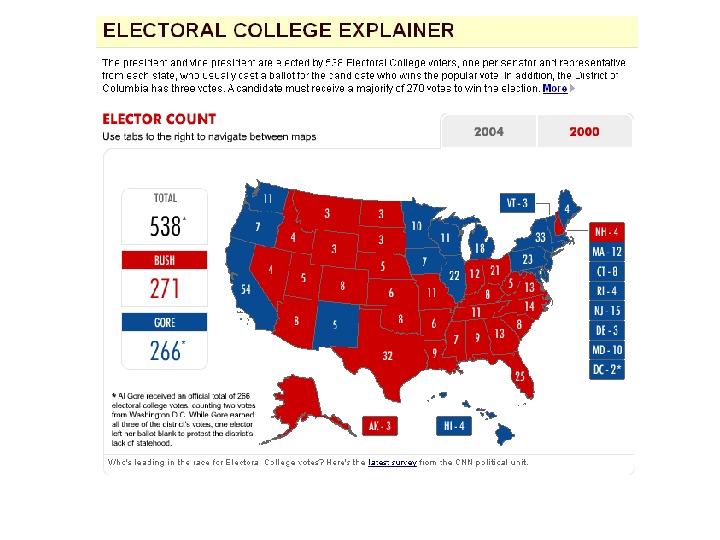- Размер: 859 Кб
- Количество слайдов: 8
Описание презентации The Political System of the United States по слайдам
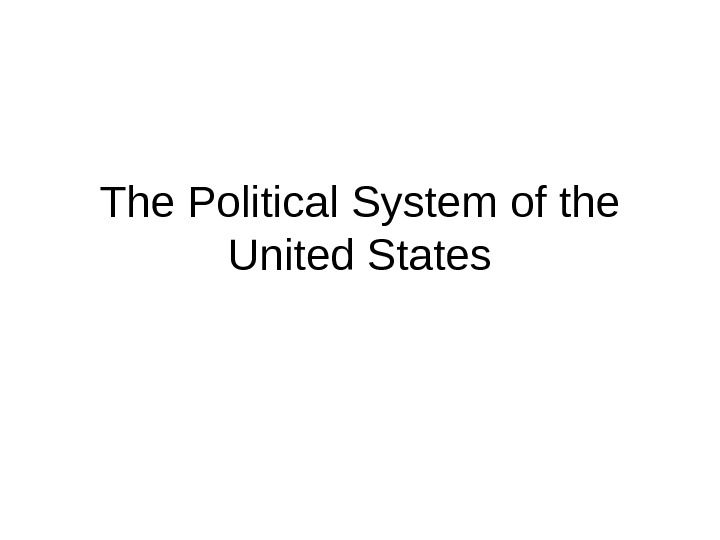 The Political System of the United States
The Political System of the United States
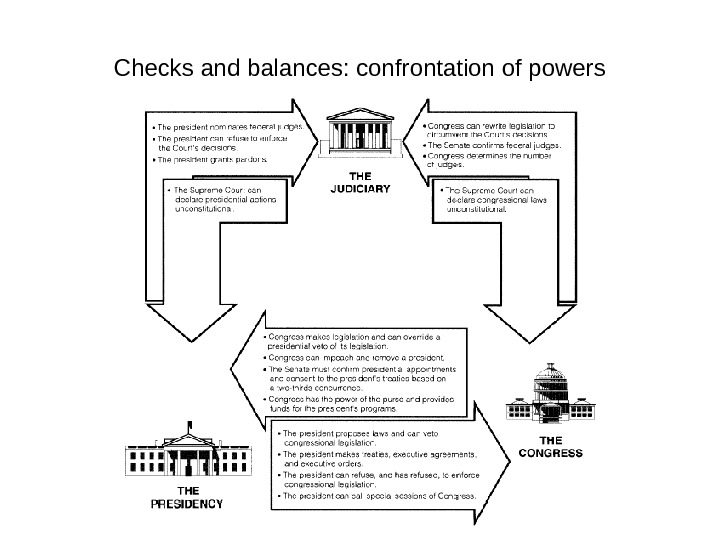 Checks and balances: confrontation of powers
Checks and balances: confrontation of powers
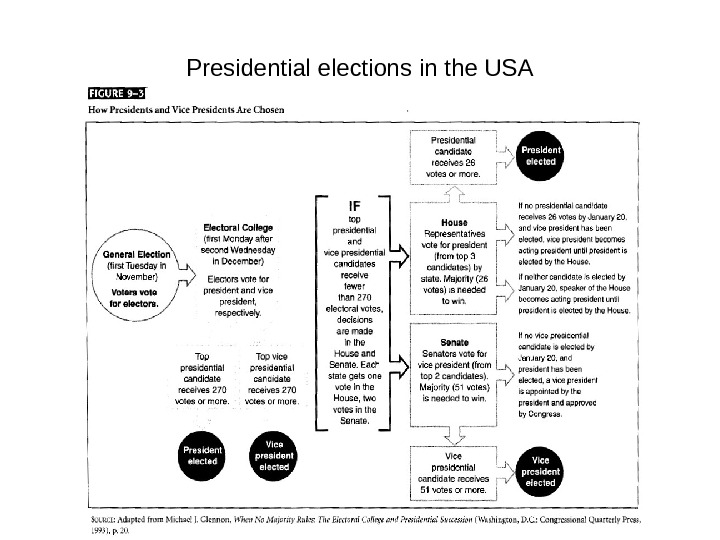 Presidential elections in the US
Presidential elections in the US
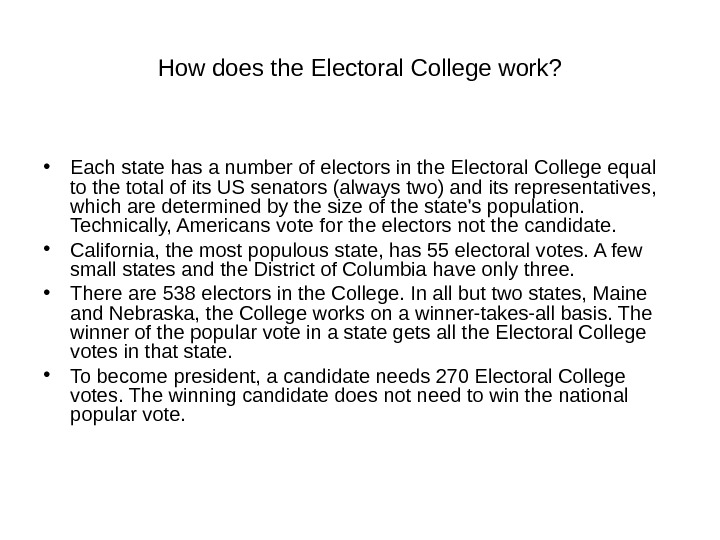 How does the Electoral College work? • Each state has a number of electors in the Electoral College equal to the total of its US senators (always two) and its representatives, which are determined by the size of the state’s population. Technically, Americans vote for the electors not the candidate. • California, the most populous state, has 55 electoral votes. A few small states and the District of Columbia have only three. • There are 538 electors in the College. In all but two states, Maine and Nebraska, the College works on a winner-takes-all basis. The winner of the popular vote in a state gets all the Electoral College votes in that state. • To become president, a candidate needs 270 Electoral College votes. The winning candidate does not need to win the national popular vote.
How does the Electoral College work? • Each state has a number of electors in the Electoral College equal to the total of its US senators (always two) and its representatives, which are determined by the size of the state’s population. Technically, Americans vote for the electors not the candidate. • California, the most populous state, has 55 electoral votes. A few small states and the District of Columbia have only three. • There are 538 electors in the College. In all but two states, Maine and Nebraska, the College works on a winner-takes-all basis. The winner of the popular vote in a state gets all the Electoral College votes in that state. • To become president, a candidate needs 270 Electoral College votes. The winning candidate does not need to win the national popular vote.
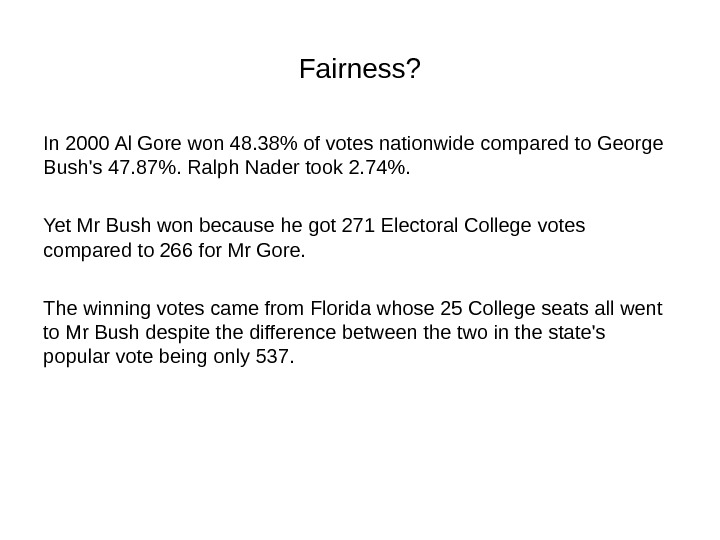 Fairness? In 2000 Al Gore won 48. 38% of votes nationwide compared to George Bush’s 47. 87%. Ralph Nader took 2. 74%. Yet Mr Bush won because he got 271 Electoral College votes compared to 266 for Mr Gore. The winning votes came from Florida whose 25 College seats all went to Mr Bush despite the difference between the two in the state’s popular vote being only 537.
Fairness? In 2000 Al Gore won 48. 38% of votes nationwide compared to George Bush’s 47. 87%. Ralph Nader took 2. 74%. Yet Mr Bush won because he got 271 Electoral College votes compared to 266 for Mr Gore. The winning votes came from Florida whose 25 College seats all went to Mr Bush despite the difference between the two in the state’s popular vote being only 537.
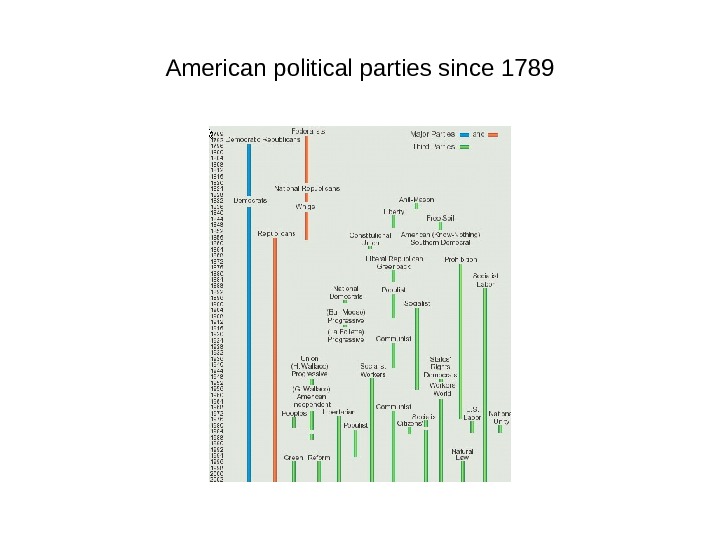 American political parties since
American political parties since
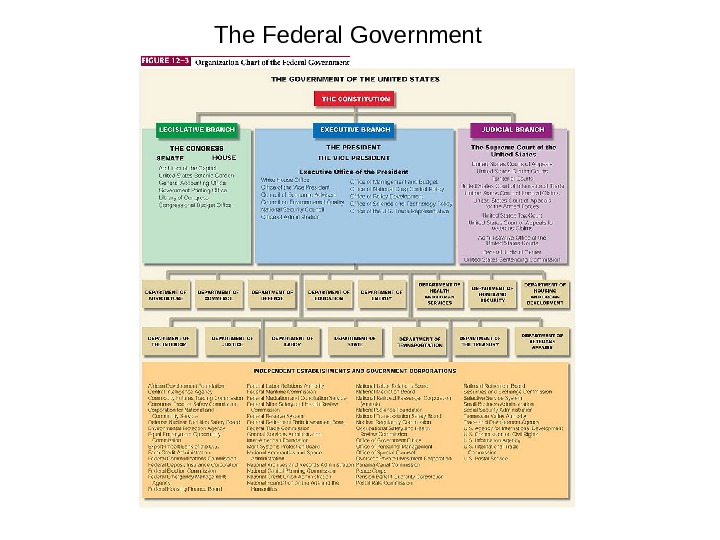 The Federal Government
The Federal Government




